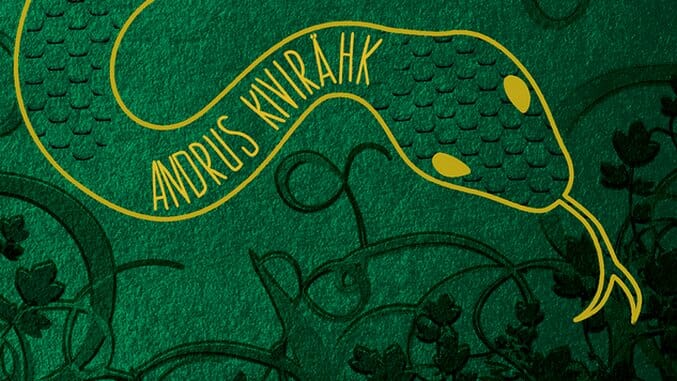
Balancing tradition and modernity has never been easy. The struggle has plagued society since mankind began progressing, challenging resistance to blend the old with the new. In The Man Who Spoke Snakish, Estonian author Andrus Kivirähk’s first book translated into English, this battle is waged in a mythic medieval forest on the cusp of a seismic shift.
 Leemet is the last man who speaks Snakish, an ancient language shared between adders and humans that allows the people of the forest to live in a symbiotic relationship with nature. Animals respond to the hissing by surrendering their lives without fight, serving humans or merely holding conversations. When we meet Leemet, he is alone caring for a mysterious “companion.” The story then shifts back to Leemet’s childhood, revealing his maturation as the people of the forest begin abandoning their ancient way of life in favor of living in a village settled by German monks and knights.
Leemet is the last man who speaks Snakish, an ancient language shared between adders and humans that allows the people of the forest to live in a symbiotic relationship with nature. Animals respond to the hissing by surrendering their lives without fight, serving humans or merely holding conversations. When we meet Leemet, he is alone caring for a mysterious “companion.” The story then shifts back to Leemet’s childhood, revealing his maturation as the people of the forest begin abandoning their ancient way of life in favor of living in a village settled by German monks and knights.
Leemet’s family is one of the last to stay in the forest, watching as their friends and peers move into the village to become farmers and forget Snakish. By the time Leemet is born, the writing is on the wall; the forest people are dying off, and Leemet lives his life knowing he will be the last boy to learn Snakish. Throughout the book, Leemet is reminded of his “last-ness” on a regular basis, and despite attempts to reframe himself as the first—the first to straddle two very different worlds, for example—the fact remains that the world he knows is crumbling around him.
The Man Who Spoke Snakish is one of the most popular books in Estonia, serving as inspiration for a board game based on its story. It also became a huge hit in France, where word-of-mouth made it a bestseller. With this English language translation by Christopher Moseley, there are undoubtedly hopes that it will find a similar fanbase in the English-speaking world, but whether or not that will happen is difficult to say. The story itself has a number of fascinating themes and engaging characters, but this translation is bulky and occasionally awkward. It’s possible to see the framework that made the novel such a success, but it’s difficult to look past the clumsy wording. At about 400 pages long, sticking it out becomes a trying task.
That being said, the novel does possess some gems. Leemet’s people consider themselves wedded to an ancient way of life, yet they share the forest with primates who appear to be an Estonian missing link—living even more “authentically” than the humans of the forest. It creates a fascinating spectrum of tradition, with the primates at one end, the villages at the other and the people of the forest caught somewhere in between. It also makes the forest people’s rejection of the villager’s lifestyle seem less righteous and more stubborn. They’ve evolved as a people since the days of the primates, so why not do so again?
The characters are defined by a sharp violence. Leemet has moments of intense, even terrifying rage that pushes him to commit jarring acts. For the villagers, religion is used to justify the torture and killing of both humans and animals, adding a methodical element that makes their violence as haunting as that of the forest people. But aside from Leemet’s musings on the way the villagers behave, there’s little reflection on the violence of both societies.
This could be an error of translation, trading nuance for blunt language, but it largely defines what seems to be missing from The Man Who Spoke Snakish. The story feels shallow, as if it is struggling to highlight something further about civilization, humanity and progress. There are enough one-liners to provide some fodder for active readers, but it takes some significant digging to make the connections the author apparently intended. While the concept itself is enjoyable and unique, the translation doesn’t do the book justice.